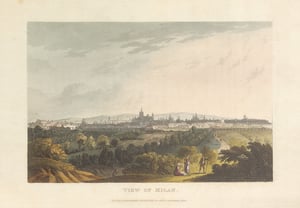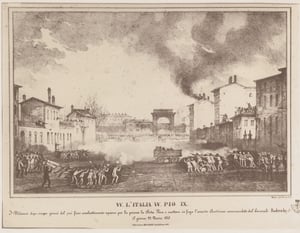In the footsteps of Carlo Cattaneo
1801-1869
Italian
Discover more →
in Castagnola
Discover more →
Il Politecnico
Discover more →
Carlo Cattaneo was born in Milan in 1801. After leaving school, he studied law in Pavia with Gian Domenico Romagnosi, before teaching for a decade at the Santa Marta middle school in Milan from 1824. He went on to become one of the most influential advocates of scientific and technical progress in Lombardy, through the pages of the periodical Il Politecnico (1839-1862) and his work and writings, such as Notizie naturali e civili su la Lombardia (Natural and Civil Reports on Lombardy), 1844. He became involved in the construction of the first Italian railway line between Milan and Venice, and the mining of fossil fuels in the Kingdom of Lombardy-Venetia, while also supporting other large-scale industrial and economic projects.


‘Useful arts develop slowly but are assiduous custodians of progress; man evolves from swimming to rowing to sailing. Never will he forget the plough once invented, nor the use of anvils or wheels, unless he can transform them later into more powerful tools’.
Del bello nelle arti ornamentali (Beauty in Decorative Arts), 1846

Carlo Cattaneo’s political studies and scientific research of those years were partly aimed at promoting the Kingdom of Lombardy-Venetia’s independence from Austria. He was sentenced to deportation by the Austrian government for these ideas, although the ruling was later suspended by order of the viceroy.
When the popular uprising of Milan broke out on 18 March 1848, Cattaneo subscribed to democratic ideas and joined the Council of War, of which he became the leader. But with his federalist views, he soon clashed with the moderate and unionist pro-Piedmont movement. After the return of the Austrians to Milan (August 1848), Cattaneo was forced to take refuge with his wife Anna Pyne Woodcock in Lugano, where he lived in exile for the last twenty years of his life.
